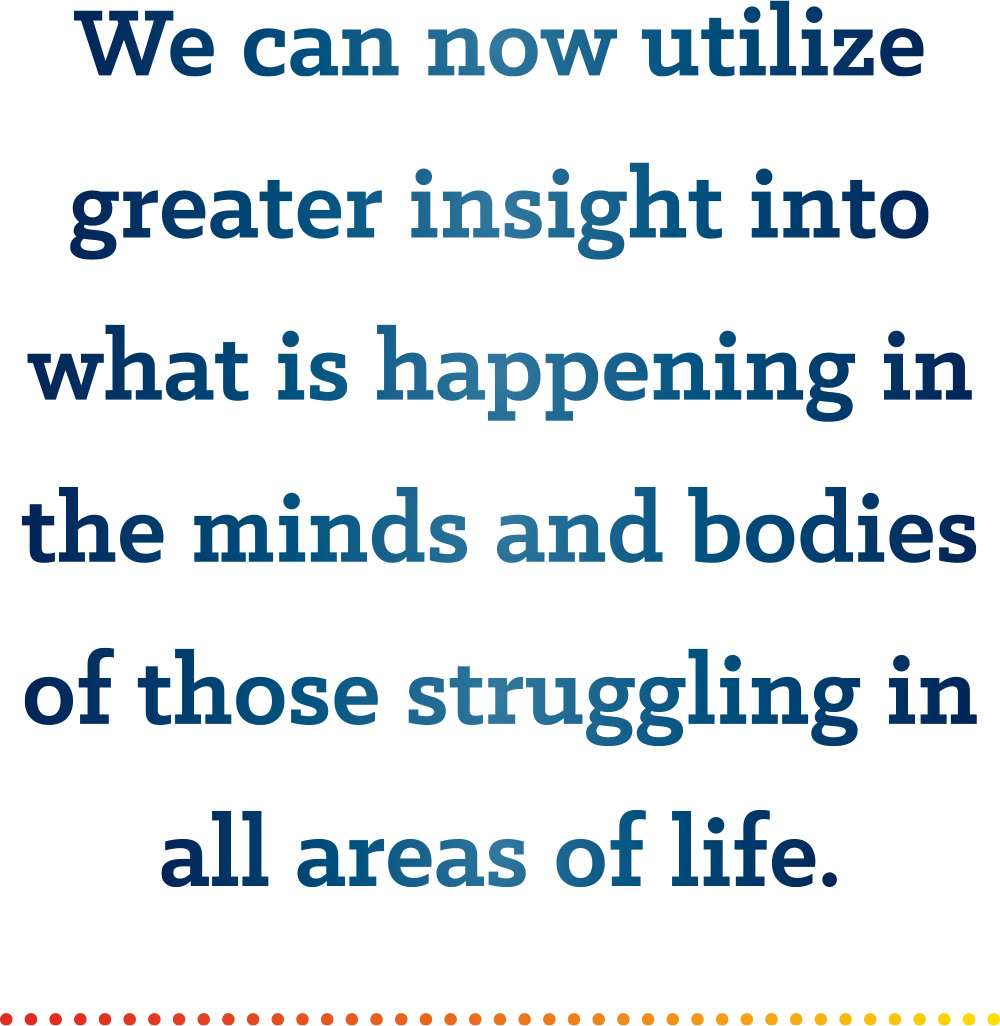Ability to create a sense of psychological safety may help us retain the “wanderers” among us.



Ability to create a sense of psychological safety may help us retain the “wanderers” among us.

Whether in the school setting, neighborhood, family or traditional worship space, the science of feeling safe, connected, and unthreatened is critical for preserving relationships in an otherwise threatening world. In this short article, I am postulating that we can address those breakdowns—the rejection, the times when people come to conflict, resort to aggression, or retreat in fear.
I believe it is because we have created non-verbal stories in the language of our bodies, facial expression, prosody and tone of voice, and posture that have shaped cognitions, emotions, and behavior. I am suggesting that it’s time we go back in our prayer closets, open God’s science book of human physiology, and build upon scientific discoveries that advanced technology has provided us through the wisdom of God.
When we are not socially engaged, connected, or feel that we are not in a safe place, physiology sends signals internally. Alarm bells go off, and we find ourselves doing what we can to escape what the autonomic system considers danger. The point is that it is not always that our children are misbehaving or are immoral, have backslidden, act out in belligerence or obstinate ways, or are rebels. An alternative answer could contain a physiological perspective of why we all behave like do.
We are not discounting bad behavior or even outright sin. Sometimes people act the way they do because something is going on physiologically. Moreover, here is where investigation, rather than automatic rebuke is necessary. This fantastic God-given body, and our world of God-given interconnectedness requires due diligence as we address maladaptive behaviors.
Here’s a quick overview of the physiology at work in our toughest relationships.
The sympathetic nervous system is associated with high arousal and mobilization towards movement. The sympathetic nervous system acts in a nuanced way. Our sympathetic system is activated if we were to spot a bear in the woods or a snake in our living room. Our sympathetic system may be activated if we are exercising or playing around. In children, you can recognize sympathetic activation when kids are excited, silly, keyed up, wiggly or squirmy, surprised, angry, scared, anxious, or have difficulty sleeping.


Feeling unsafe or threatened, manifests as a flight or fight response. However, when we learn how to support this physiological state, this activation can be mobilized toward positive, productive energy. The immobilization state characterized as freeze or shutdown and controlled by the dorsal vagus nerve is recognized in children and adults experiencing withdrawal from people, isolation, depression, relaxation, helplessness, boredom, or sadness.
When we understand this unique perspective of physiology, simple techniques can help our young and old people feel safe. And, we will be able to help shift autonomic nervous systems from feelings of danger and disconnection to connection, safety, and social engagement.
Humans are created to be social creatures. We connected socially in the womb, anatomically. When we come out of the womb, we connect through facial expressions, sound, touch, and relationships developed by our parents or caretakers. When we do not feel connected, safe, or sense of danger, we retreat. Sometimes we look for other groups to be a part of. Sometimes we make risky decisions, or react in ways that may be counterproductive.
As parents, teachers, and church leaders, we sometimes unwittingly create an environment—now a culture—that makes peoples’ nervous systems unsafe. The natural physiological response is to react defensively through separation.
Through our messaging, our belief systems (Dana, 2020) (Menakem, 2017) we hold dear that may be antagonistic to others, our tone and expressions can shut down the social engagement system and make others not want to be a part. We interpret their response as apostasy, not having the Spirit of God, or rebellion, not realizing there could be a physiological connection.
So, how do we shift our autonomic states from danger to the safety and social connection? There are several answers to this:

We must first learn that adverse facial expressions, eye movements, body language, tone, and social responsiveness are not voluntary; our amazing social and interconnectedness means our bodies may be to respond to signals from other bodies automatically.

Deliberately send safety and attachment signals with all people no matter where they may be coming from.

Be aware of all parts of our interactions: body language, tone, and facial expression.

Learn to maximize the ability to calm people through our bodies by deliberately learning ways to keep calm ourselves. This includes learning breathing techniques, mindfulness, thinking about heavenly things, calming scriptures, positive thinking, and beholding the love of Jesus. Remember, there is a biological process in which the calm in your body combined with attachment, will help calm another person.

Let us teach ourselves and others how to understand the story the body is telling us apart from our conscious state.

Use music in every possible way, as it organizes and calms the brain.

Rather than retreat or resort to aggression, let us teach ourselves and others to move into interaction when feeling anxious and overwhelmed.

When you notice fight, flight, or shutdown in others gently comment, and help the person become aware how that feels, while (if possible) remaining in connection.

Create safe environments in our churches, which are necessary to relate, relax, and attend to bodily functions.

Know that your tone of voice, facial expression and body language all have more power than content of words.


Regularity, predictability helps create safety.

Pay attention to the sound environment: lower frequency sounds remind us of predators. When people feel unsafe, they become hyper-sensitive to background noise, the hearing muscles tighten, and people feel less able to tune into the human voice and separate it from background noise. Work on tone in voice, and redesign noise environment.

Learn breathing techniques with longer exhalation.

Understand the importance of play in life and enjoyment of life in the church as it creates a safe place, enhance relationships, and solidify connections.
It was the wisest man, Solomon, who told us in a proverb, “An anxious heart weighs a man down, but a kind word cheers him up,” (Proverbs 12:25). Even the Apostle Paul acknowledged in 1 Corinthians 7:32 “I want to be free from anxieties,” and encouraged his believers to “Cast your anxiety on him because he cares for you” (1 Peter 5:7).
The Psalmist says in Psalm 94:19 “When anxiety was great within me, your consolation brought joy to my soul.”
All these scriptures and many more teach us safety in Jesus, connection in Jesus, confidence in Jesus, and peace in Jesus’ promises. When we fully behold Jesus Christ, His heart, love, power, and wisdom, our young people, old people, struggling people will feel the safety of heaven in our midst and be compelled to be healed of the trauma that has socially disconnected them and run them away.
Let us create climates of safety in our spaces. Let us live up to the meaning of a sanctuary. Let us learn empathy, unconditional positive regard, and congruency with each other. Let us learn how to actively listen, walk in another’s shoes, show compassion, and demonstrate mercy and forgiveness. Let us learn how to speak to one another, how to present the powerful message of the bible. Finally, let us look to Jesus for our wisdom, guidance, strength, and hope.